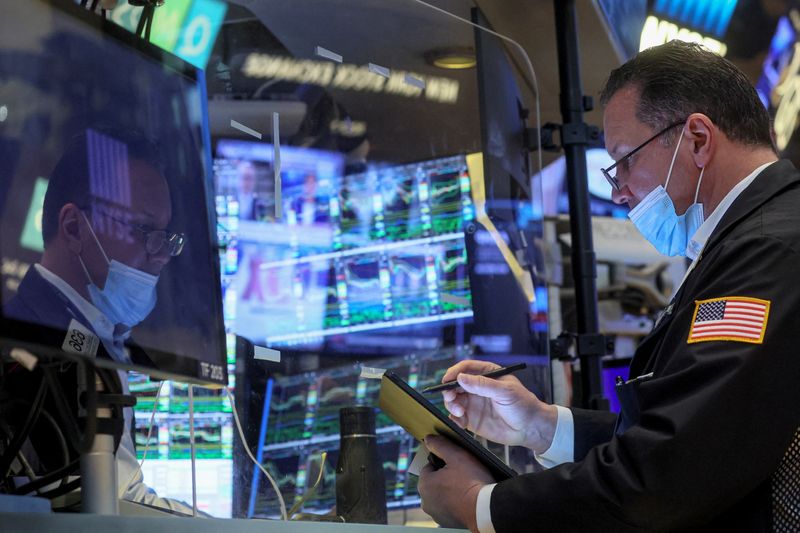Surging oil prices add another worry for frazzled investors By
[ad_1]

© Reuters. FILE PHOTO: A trader works on the floor of the New York Stock Exchange (NYSE) in New York City, U.S., February 18, 2022. REUTERS/Brendan McDermid
By Lewis Krauskopf
NEW YORK (Reuters) -A U.S. stock market, already on edge from a hawkish Federal Reserve and a conflict between Russia and Ukraine, now has another worry: higher oil prices.
prices stand at around $91 a barrel after surging some 40% since Dec. 1 and earlier this week touched their highest level since 2014. Prices for , the global benchmark, have also soared and are near 7-year highs.
Rapidly rising oil prices can be a troubling development for markets, as they cloud the economic outlook by increasing costs for businesses and consumers. Higher crude also threatens to accelerate already-surging inflation, compounding worries that the Fed will need to aggressively tighten monetary policy to tamp down consumer prices.
“The stock market would really run into trouble if we went north of $125 per barrel and stayed there for a while because that would overheat high levels of inflation,” said Peter Cardillo, chief market economist at Spartan Capital Securities. “That means that the Fed would have to be a lot more aggressive and that certainly would not be a pleasant scenario for the stock market.”
Rising tensions between Russia – one of the world’s largest oil producers – and Ukraine recently helped drive the rally in oil, which had been supported by a recovery in demand from the coronavirus pandemic.
Capital Economics analysts said earlier this week that crude oil and prices would surge if the conflict in Ukraine escalated “even if they fall back relatively quickly as the dust settles.”
Elevated oil prices contributed to the rise in U.S. inflation, which grew at its fastest pace in nearly four decades last month: While overall consumer prices rose 7.5% year-over-year in January, the index’s energy component rose by 27%.
Each “sustained” $10 increase in the price of oil per barrel adds about 0.3 percentage points to the overall consumer price index, on a year-over-year basis, according to analysts at Oxford Economics.
“The largest impact of higher oil prices is on consumer price inflation and it adds further to the pressure for the Fed to be more aggressive,” Kathy Bostjancic, chief U.S. financial economist at Oxford Economics, said in emailed comments to Reuters.
The benchmark is down over 8% this year while the yield on the benchmark 10-year Treasury note has risen by 40 basis points to over 1.9%. Investors are pricing the Fed funds rate to rise to above 1.50% by the end of 2022, from near zero now, according to Refinitiv’s Fedwatch tool.
CONSUMER SPENDING IMPACT
Rising crude is already raising costs for businesses and drivers. The national U.S. average for gasoline recently stood at $3.48 a gallon, automobile group AAA said earlier this week, up 18 cents from a month earlier and 98 cents from a year ago.
As gasoline prices rise, investors are…
[ad_2]
Read More: Surging oil prices add another worry for frazzled investors By
